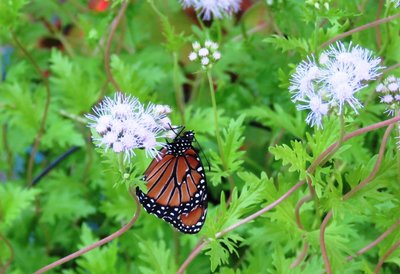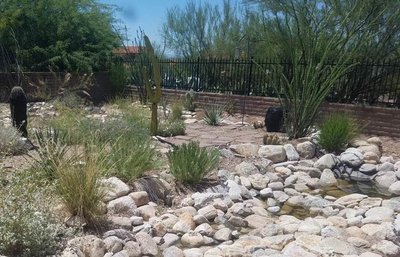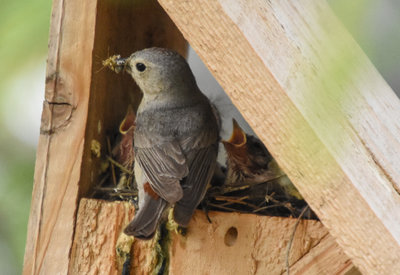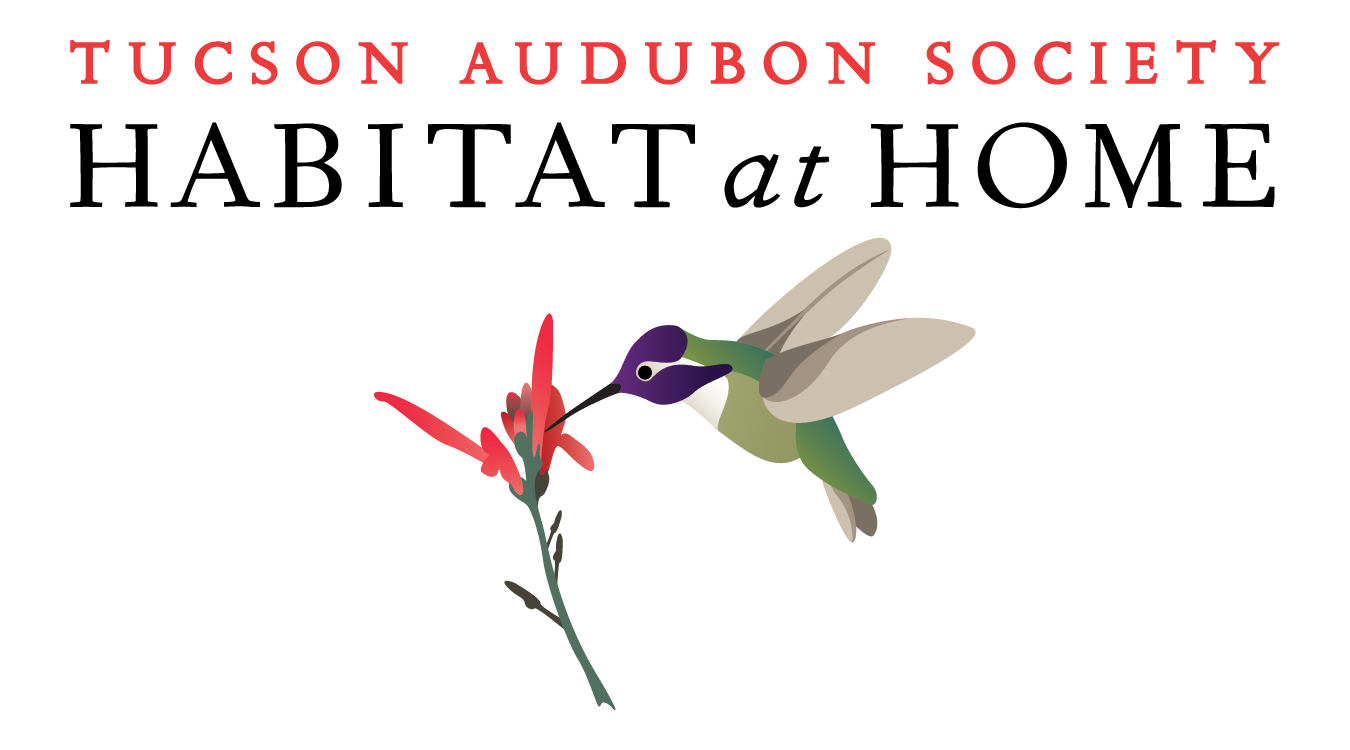By Kim Matsushino, Habitat at Home Coordinator, and Olya Phillips, Citizen Science Coordinator, Tucson Audubon Society
When thinking about urban birds, pigeons, doves, and finches usually come to mind. However, they only constitute a small number of birds visiting backyards. The number of bird species occupying urban areas is vast in southeast Arizona. With the right setting, your backyard can attract a great diversity of bird and pollinator species, from hummingbirds and screech-owls, to native solitary bees and butterflies.

The best way to create beneficial habitat for birds is by planting native plants. Carefully selected and strategically placed native plants in backyards have the ability to attract an array of native birds and pollinators, as well as serve as corridors that connect large natural areas – imperative to species’ survival. Native plants have evolved adaptations allowing them to thrive in the regions’ specific growing season, climate, and soils. The nectar, fruits, nuts, and seeds native plants produce are pivotal in ecosystem health and function. Furthermore, native plants provide the shelter and nesting opportunities that birds rely on. When varying levels of vegetation (ground cover, mid-story, and canopy) are incorporated into backyard habitats, they offer niches for birds who seek protection from predators, resting spots during migration, and a place to raise their young.

We as homeowners and renters have the unique opportunity to help curtail the negative effects of urbanization through creating beneficial backyard habitats. Yards and budgets don’t have to be large to make a difference, but we can all do our part. Tucson Audubon’s Habitat at Home program’s mission is to help and encourage homeowners to create bird and pollinator friendly outdoor spaces, and to celebrate those who have done so. The program strives to be inclusive to all yards, no matter the size, location, HOA restrictions, experience, or budget.
Habitat loss and fragmentation are the leading causes of biodiversity loss worldwide, with urban development being a large contributor. The destruction of wild lands eliminates vital habitat for birds and pollinators. Native plants are often removed and replaced with nonnative species that often don’t provide enough nectar or pollen to support our local biodiversity. They can choke out native species, disrupting or destroying the native ecological community. Cavity-bearing saguaros are often removed to make way for development. The competition for the remaining ones is high, especially with invasive European Starlings and House Sparrows aggressively taking over cavities. Mature trees old enough to bear a cavity are often pruned to the point of removing any buckling bark or splitting branches that offer crevices highly preferred by Lucy’s Warblers in particular.

The addition of nestboxes to an urban setting is another way to make a yard more bird-friendly. Nestboxes are not known to be associated with a desert setting due to the fear that they would get too hot and unsafe. Tucson Audubon conducted a careful study to develop best practices for responsible nestbox installation in the desert to break that notion. By using small temperature loggers, we were able to test various installation techniques including aspect and shading. Our results showed that North or East exposure allows nestboxes to be shaded from afternoon sun, and that the dappled shade of a tree provides enough overhead shelter from sun and a way for hot air to escape as it rises. By installing a nestbox in a responsible way, it is possible to create safe nesting options for desert birds who suffer from loss of habitat by urbanization.
Our backyard certification program has many levels of habitat success ranging from a couple flowering native plants to bio-rich habitats incorporating sustainable water practices, nestboxes, water features, and safe places to raise young. Whether you are just starting out or have already created a backyard habitat, we encourage you to join the program, place your yard sign, and help the program grow as we provide essential habitat for birds. Learn more about Habitat at Home, and our nestbox program.

